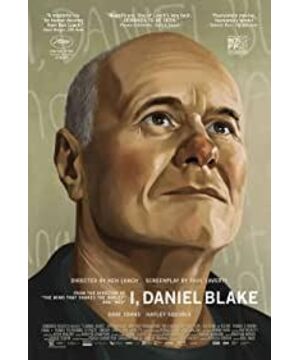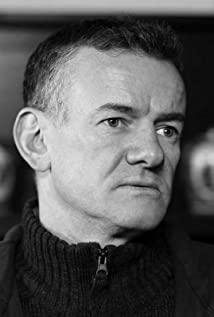His works were nominated for the main competition of the Cannes Film Festival 14 times and won the Palme d'Or twice. Ken Roach is undoubtedly the most popular director in Cannes. He and Mike Lee have almost claimed all the British "quota" at the Cannes Film Festival in recent decades. Ken Roach, who has a working family background and a legal professional background, regards himself as a believer of De Sika, and has consistently used what he believes to be De Sika's realist aesthetics to tell the joy and sorrow of the working class for half a century. , Suffering and happiness. In terms of shooting subject matter and value orientation, Ken Roach is an absolute hardcore leftist. His works stand firmly on the position of the working class, examine and analyze the situation of workers, speak out for workers, and resist power and injustice. Jean Lodge won the second Palme d'Or, "I Am Black", which is exactly such a work. After the film was released in the UK, it became Ken Lodge's highest-grossing film ever. Prior to this, Ken Rocky's film box office performance had been poor. In the 1970s and 1980s, he had to make a living by shooting commercials.
An abnormally high box office does not necessarily mean a good work. Otherwise, Eastwood's "American Sniper", which won $350 million in box office in the United States, would not be ridiculed by Seth Rogen as a "Nazi propaganda film." But the abnormally high box office can at least prove that the film has really caused too much emotional response from the audience. After all, this is a non-special effects film with no stars and no violent erotic rendering. To put it simply, the killer feature of "I Am Blake" is sensational, and it is a powerful sensation based on the key to the British social mechanism, and the degree is close to the level of a propaganda film.
It is common and understandable that a director has a clear political stance, and a film has positive and negative evaluations of certain historical events and certain social mechanisms. Highly politicized films like Godard's extremely radical "Chinese Girl" and even "East Wind" use Brecht-style alienation methods of dislocation of sound and picture to deconstruct the screen identity illusion and discuss the possibility of political struggle. Bertolucci's "1900" involves the historical process of communism, fascism, capitalism and other major social-political systems, but the foothold of the film is the choice and destination of people in these ideological-historical processes. Are people. A movie, if the ultimate goal is to criticize or eulogize a certain ideology, a certain system, a certain social organization, or a certain type of people, regardless of the multiple degrees of correctness of this criticism or euphoria, this is still A promotional film. To put it in another way, although Ken Lodge's position is a very fierce left-wing critique, his way of expression is the most conservative propaganda aesthetics.
Ken Lodge's first film to win the Palme d'Or, "The Wind Blowing Wheat Waves" has already begun to show its signs. The whole movie tells one thing, the great mental trauma brought to the Irish people by the beast-like rule of the British Empire, the tragic ending of the fratricidal brotherhood is the best proof.
The presupposition of "I Am Black" is also extremely clear. The film focused on criticizing globalization, neoliberalism, and British hypocritical welfare institutions, and praised the precious qualities of British workers' integrity, perseverance, courage, humor, and kindness. The intensity of criticism and acclaim reached its climax at the end of the film, and the high box office in the UK is the result of the audience's resonance.
Although Ken Lodge believed in De Sika, his script was far more dramatic than De Sika because of his early theater background. Ken Lodge's reference to De Sica actually lies more in the use of non-professional actors and in emphasizing naturalistic performance.
De Sica's Italian neo-realism sometimes does not structure the plot with a causal chain. The sequential relationship between behavior and behavior is often just because this behavior precedes the other behavior in time, rather than this behavior leading to the other behavior. The scene where the famous maid makes coffee in "The Tears of the Wind" has been used as an example by film critics. The special thing about this scene is that it is a scene without any purpose. Making coffee is just making coffee. It has no meaning, no metaphors, and no predictions. It is just a part of daily life. In Ken Lodge's movies, there is no such a scene. Every scene in his movie is carefully theatrically designed.
The plot chain of "I Am Blake" can be regarded as interlocking. There is no "useless" waste drama in the overall drama framework, and the most obvious point of the film's implementation of the dramatic principle is the extremely deliberately set confrontation between the subjects. The huge contrast. The image and quality of the male protagonist Blake, the more positive and perfect, the more ruthless and unreasonable and negative the behavior of welfare agencies, the greater the intensity and empathy of the audience for evil and good, and the greater the impact of the film on the audience. The emotional incitement is also more successful. And all of these are the presuppositions of Ken Rocky.
We can take a closer look at the film’s plot framework, which is the ball-kick-style dilemma that Black faces. It is worth noting that these plots and characters are all fictional by the creators (the screenwriter Paul Laverty is a human rights lawyer, and he has extremely rich experience in rights protection in his early years, which definitely affected the direction of the script). As the protagonist, Black has a serious heart problem and is unable to work, so he needs to apply for relief for being unable to work due to his disability. However, the so-called medical insurance professionals hired by welfare agencies determined that Black did not meet the standard and was not qualified to claim it in an almost absurd way. So Black could only apply for reconsideration. But reconsideration takes time. So apply for unemployment benefits, but the prerequisite for receiving unemployment benefits is to find a job. And even if Black got a job, he couldn't work because of physical reasons. Faced with this predicament, he finally gave up applying for unemployment benefits. When seeing the dawn of applying for disability benefits, Black suffered a heart attack and died unfortunately. The root of this kick-ball-style dilemma comes from the first disability certification.
The first scene of the film's opening is this certification. The process is very absurd. The screen is black, and the voice-over dialogue appears alternately, which is a question-answer process. As a medical insurance professional's answer, it gives people a highly mechanized sense of robot. And until the end of the scene, the image of medical insurance personnel did not appear. This seems to really resemble the existence of an artificial intelligence. What is intriguing about this scene is that although the questioner is like an artificial intelligence, Black is obviously making things difficult. Digressive questions from healthcare professionals deliberately destroyed Black’s certification process. In other words, Black was not victimized by the strictly designed procedural, institutionalized, and hierarchical welfare system, but the welfare system did not want to give any assistance to victims like Black at all. From Ken Lodge's understanding, the hegemony of neoliberalism is that people like Black are slackers, and a "free competition" society does not allow such a room for survival. We have no intention or need to discuss the pros and cons of neoliberalism here. The key is that Ken Lodge presupposes such a harmful existence, so the audience should feel it most deeply and criticize it highly negatively. The play is then presented as such a model of active indoctrination-passive acceptance, and this model is the model of a promotional film.
In order to strengthen this persecution, Ken Lodge also set up two supporting roles. Black's neighbor, the black brother, smuggled shoes because the salary as a worker was too low to survive. Single mothers send out Katie, and even become prostitutes under the persecution of the bad welfare system (the welfare system actually forces the good to be a prostitute!).
The climax of the film is Black’s funeral. Katie reads a self-certifying letter from Black, a letter of ultimate criticism of the British welfare system.
The leading figure of Italian neorealism was originally Rossellini who photographed "Rome, the Undefended City", but after De Sica photographed "The Biker", everything changed. De Sica replaced Rossellini and became the full spokesperson of New Realism. On the one hand, this is because of the aesthetic system of "Bicycle Thief", which has a strong tendency of social criticism, which is more easily accepted by the audience and the world-class influence caused by it. On the other hand, it is the change of Rossellini's creative style. In "Rome, the Undefended City", the facial makeup of a Nazi officer was similar to the way that made Rossellini worried (he did not have full control over the film at the time), and he even thought that his true debut was "Guerilla ".
The famous French film critic Amédée Ayfre has a wonderful evaluation of the last part of the Rossellini war trilogy, "Germany Zero Year", and this evaluation is of great reference value. Ayfre believes that there is no performance in this movie. The child is not acting at all. "We cannot say whether he performed well or poorly; he transcended that. We also cannot say whether he is sympathetic or repulsive; he is just alive and the camera is watching him. We also cannot tell what he was inside after killing his father. Feeling (regret? Regret? Despair?). The child exists as a whole." Ayfre thinks Rossellini gave us a "holistic human attitude." In his opinion, in fact, even Rosselli Ni didn't know why the child committed suicide, and the child did not belong to Rossellini. In this regard, Abbas has a more subtle version of expression, "I did nothing, but if I don't exist, this movie won't exist either."
Regarding reality and neo-realism, Rossellini has repeatedly emphasized moral issues. "There is no technology to capture the truth." The moral he understands is "to understand the individual, to understand the individual with more curiosity, not only It is only the surface of the individual, but also the most subtle aspect of the individual soul!"
For Ken Lodge, there is no complex and ambiguous dimension of the individual soul. The individual and reality have long been instilled into the audience with his single-line brushstrokes, and everything just needs to be accepted.
(Already published in the "Iris Official Account" Evil Column)
View more about I, Daniel Blake reviews











